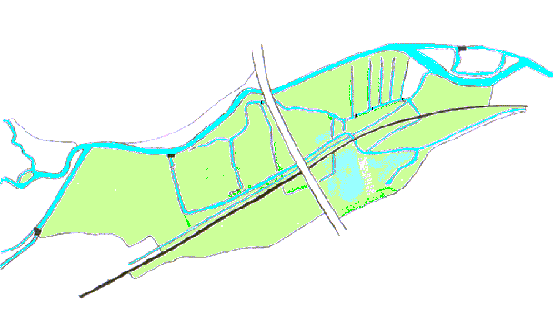

A new nature reserve in Hertfordshire – King’s Meads
Many birders will know of King’s Mead as the site where a pair of Garganey bred for a few years from the late 1980s until 1991. King’s Mead is the largest of a number of riverside meadows between Hertford and Ware but the name is generally used to describe the entire 100-hectare site. The scale of the area is perhaps best appreciated whilst travelling on the A10 flyover which unfortunately bisects the site.
The good news is that after several years negotiation the entire site has been declared a nature reserve. Following agreement on a detailed management plan put forward by the Herts and Middlesex Wildlife Trust, the five landowners (including Glaxo Wellcome, Thames Water and East Herts District Council), have passed the management of the site to the Trust for the next ten years. The landowners have a very positive attitude to the area and have demonstrated this by providing funding to implement the plan.
Much of the bird interest depends on the regular flooding of the meadows. Winter floodwater boosts the wildfowl numbers with Wigeon, Teal, Gadwall and Shoveler all favouring the site. Large numbers of gulls may rest on the water before heading off to the Lee Valley roosts.
When floodwater persists into the spring, the shallow pools attract breeding Mallard, Coot, Gadwall (6 broods in 1999) and Dabchick. Little Ringed Plovers are frequent visitors but rarely breed. Shoveler bred in 1988. Recent management work aimed at encouraging Snipe seems to be working with a pair probably breeding in 1999. Lapwing have also returned to breed. In dry years breeding birds are unexceptional, the highlight probably being up to 3 pairs of Meadow Pipit and a few Skylarks, with waterbirds restricted to the river channels and ditches.
Muddy pools at passage times attract the usual waders, with Greenshank, Little Stint, Black-tailed Godwit, Wood Sandpiper and Ruff noted over the last few years. A pair of Stonechat is usually present in winter. Rarer visitors in recent times include Marsh Warbler, Mediterranean Gull, Iceland Gull, Osprey and Merlin.
The site is not only of ornithological interest of course. The chalk grassland on the steep valley side below the Hertford to Ware road supports Pyramidal Orchid, Chiltern Gentian and Small Scabious. The meadows, although ‘improved’ in places, have several notable plants, including Meadow Saxifrage and Adder’s-tongue Fern. The ditches retain interesting aquatic plants, are good for dragonflies and also have a population of Water Voles. The Wildlife Trust has created an Otter refuge island nearby on the river Lee and Otters now regularly pass through the site.
The management objectives over the coming years are as follows:
The Wildlife Trust will maintain a regular presence on the site and welcomes help with developing the reserve. Regular work parties will be held during the winter months. Recording changes over the coming years will be very important, especially the breeding birds, plants and insects. If you want to find out more about the reserve or how to get involved, get in touch with Graham White on 01727 858901. All records from the site will be appreciated.
